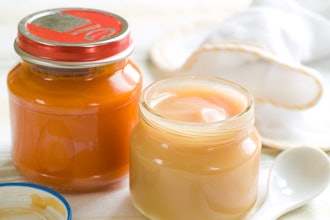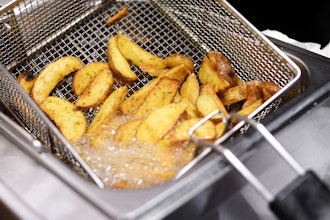JACKSON, Miss. (AP) — With a glut of peanuts driving prices down, farmers across the country are cutting back on planting, and nowhere is the expected change more marked than in Mississippi.
Mississippi farmers plan to put 22,000 acres into goober peas this year, or about 42 percent of last year's acreage, according to the U.S. Department of Agriculture. But last year's plantings were about 2½ times those for 2011 because drought in Georgia, the No. 1 peanut state, caused a high spike in prices.
"This is a return more to normalcy for Mississippi peanut acres," said John Michael Riley, an economist with the Mississippi State University extension service. "Last year's was more of an anomaly."
Last year the legumes brought up to $1,000 a ton.
"Since then, that price has tumbled back down to the real world," Riley said. He said the most recent price he'd seen was about $370 to $400 a ton. Late March prices, according to USDA's National Agricultural Statistics Service, averaged just over 25 cents a pound, a price that works out to about $500 a ton.
Peanuts are planted in April or May, when soil temperatures rise to 65 or 70 degrees Fahrenheit and there's no danger of frost.
Scott Flowers said he planted 400 acres of peanuts in 2012, growing them for the first time. The Coahoma County farmer, who has an 8,000-acre operation, only plans to plant 200 acres this year. He said peanut companies have been offering contracts with higher prices in recent weeks, and he might have planted 400 acres again, but he's already contracted to sell other crops and prepared land for them.
"It's a little late to be changing," Flowers said.
Nearly 2.4 million tons were in commercial storage at the end of February compared to 1.3 million tons a year earlier, according to USDA's most recent peanut stock and processing report. "This total includes 4.03 billion pounds of actual farmer stock," it said. The report said 1.79 million pounds of peanut butter and 51,840 pounds of roasted peanuts were delivered during February through federal food and nutrition programs.
Nationwide, according to the statistics service, planned peanut plantings are down 27.5 percent from last year. Georgia is planting 475,000 acres — the same as in 2011, but down 35.4 percent from last year's 735,000 acres.
Farmers in Alabama, last year's No. 2 state with 220,000 acres, plan to put in 150,000 acres this year. That would put them No. 3 behind Florida, where farmers plan to put in 190,000 acres — 5.5 percent down from last year, but nearly 12 percent up from 2011.
Mississippi, which rose from eighth to sixth among the nine peanut-growing states, will be seventh this year if farmers plant the acreage currently expected. The spike had led peanut companies to build facilities in Mississippi to buy, process and store peanuts, including one built by the Clint Williams Co. in Clarksdale. Flowers said more acres would help the company, but said a one-year drop won't kill the business.
"I think they definitely want more acres in peanuts," Flowers said. "I think they're also here for the long term and understand it's going to be a down year."
He predicted that acreage would rebound somewhat in 2014.
Flowers bought a combine and a peanut digging machine last year, but said they were relatively inexpensive compared to other equipment used on his expansive spread, and may have paid for themselves in one year.
"We had a good year last year and peanuts were probably our most profitable crop," Flowers said. "It's not going to bother me to let it sit this year."
Peanut butter prices also are "down to a more normal price range" after a 30 percent to 35 percent increase last year, said Patrick Archer, president of the American Peanut Council.
Creamy peanut butter, which had averaged about $2 a pound from 2008-2011, peaked in December at a nationwide average of $2.90 — its highest price at least since 1984, according to the Bureau of Labor Standards — and edged back to $2.81 in February.
One result of last year's 3 million-ton crop is that exports are likely to be more than double those for a normal year, to about 600,000 metric tons, Archer said.
"About half of that is expected to go to China, which is not normally a large export market for U.S. peanuts," he said. Exports to China in 2011 and 2012 were about 800 metric tons each, he said.
China grows far more peanuts than the U.S. — about 14 million to 15 million tons a year — and grew about 16.5 million tons last year, Archer said. He said China usually imports peanuts from India, which had a poor 2012 crop.
Although peanuts going to China are a grade usually kept for eating, most will be ground for oil, he said.






















